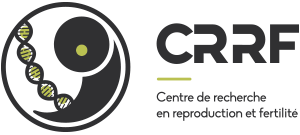
Julie L. Lavoie, PhD
Professor and École de kinésiologie et des sciences de l'activité physique of Université de Montréal.
Address
- 514 343-5602
- julie.lavoie.3@umontreal.ca
- https://recherche.umontreal.ca/nos-chercheurs/repertoire-des-professeurs/chercheur/is/in14918/
- CRCHUM – Tour Viger
900, rue Saint-Denis,
bureau R08.452
Montréal, H2X 0A9
Research interests
Pre-eclampsia (PE) is diagnosed after 20 weeks’ gestation with the onset of hypertension (systolic blood pressure ≥ 140 mm Hg or diastolic blood pressure ≥ 90 mm Hg) and proteinuria (≥ 300 mg / 24 h). Women with chronic hypertension have a 20-25% risk of developing PE (known as pre-eclampsia superimposed on chronic hypertension, PESCH). The molecular mechanisms underlying the development of PE are still poorly understood, and premature delivery of the fetus is the only available treatment. The renin-angiotensin system (RAS) is thought to be involved in the development of EP. My group has characterized a new PESCH mouse model. Mice overexpressing both human angiotensinogen and renin (R + A +), which have a hypertensive phenotype in the normal state, spontaneously develop PESCH-like features as their blood pressure increases, and develop proteinuria during gestation. This is associated with an increase in AT1 receptor and decreases in MasR and ACE2 in the placenta and aorta. These modulations may contribute to increasing Ang II sensitivity and decreasing both Ang 1-7 production and sensitivity.
While fitness training is well known for its health benefits in the general population, it has also been shown to improve pregnancy outcomes during normal gestation. We recently demonstrated that exercise training can also prevent the onset of preeclampsia in mouse models of the disease. Furthermore, we found that the change in RAS observed in the PESCH mouse model can be reduced by physical training, as we observe an increase in MasR and a decrease in the AT1 receptor in the placenta and aorta. Overall, our project aims to identify markers of PESCH development and their timing of onset to enable earlier diagnosis in patients. We also aim to evaluate the therapeutic potential of ExT and Ang 1-7 administration in the context of PESCH. Interestingly, in our recently characterized model of preeclampsia superimposed on chronic hypertension, mice overexpressing human renin and angiotensinogen (R + A +), we observed that it normalized litter size, significantly decreased in sedentary transgenic mice. Therefore, while hypertension or RSA seem to have a negative impact on fertility, physical training could potentially improve fertility in this model. We therefore wish to test the hypothesis that physical training restores fertility by altering the process of ovulation and/or embryonic implantation in R + A + mice.
Members of the laboratory
Suzanne Cossette
Assistante de recherche
suzanne.cossette.chum@ssss.gouv.qc.ca
Sarah Lambert-Roy
Étudiante à la MSc
sarah.lambert-roy@umontreal.ca
Jessica Chemtov
Étudiante à la MSc
jessica.chemtov@umontreal.ca
Mahsa Maleknia
Étudiante au doctorat
mahsa.maleknia@umontreal.ca
Olivier Chenette-Stewart
Étudiant au doctorat
olivier.chenette-stewart@umontreal.ca
